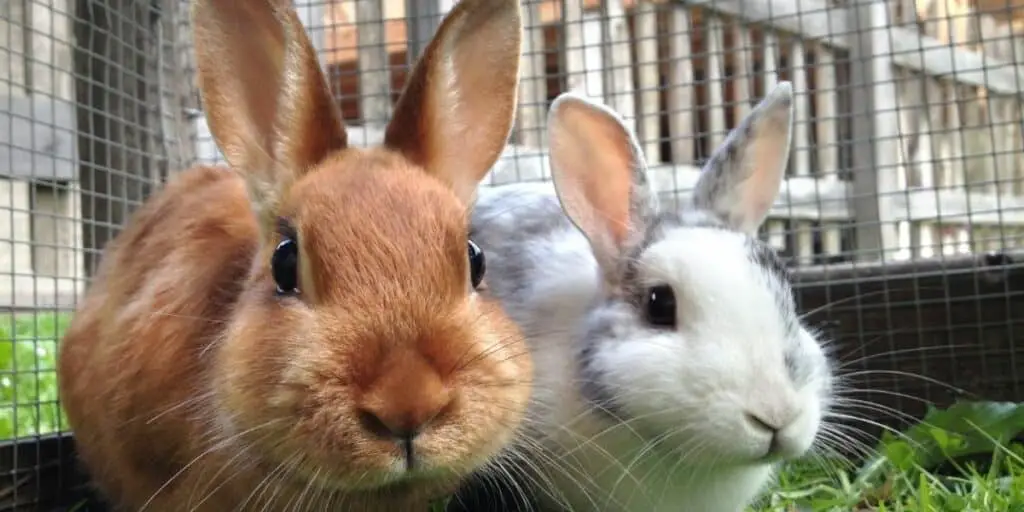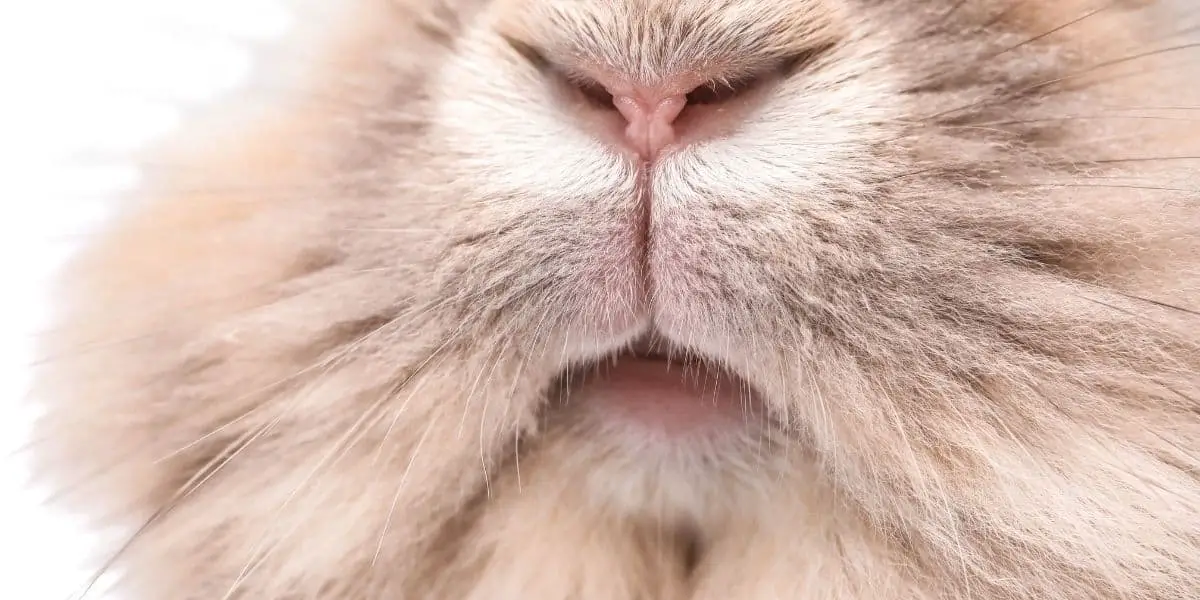If you are wondering if rabbits have whiskers, yes they do!
Rabbits do indeed have whiskers. These whiskers, more formally termed vibrissae, are hairs that protrude from the nose, mouthparts, and cheeks of the rabbit. Vibrissae are a special type of hair found in mammals that are distinguished by their length and highly developed follicles. The follicles that support whiskers are highly vascularized with multiple nerve connections to the area of the rabbit’s brain that processes touch.
The whiskers and lips of a rabbit are extremely sensitive and used by the rabbit to navigate and find forage.
Rabbit whiskers look incredibly cute and expressive but are also vital for their health and survival. In this concise guide, we will equip you with everything you need to know about your bunny’s face fuzz and how you can keep it healthy.
Table of Contents
How many whiskers does a rabbit have?
Rabbits carry up to 100 of these specialized stiff hairs on their faces with some being more prominent than others. They are distinct from the rabbit’s regular, pelagic hair and emerge early on in the embryonic development of the rabbit in close relation to the nose and eyes.
Eventually, the whiskers grow to a length that is equal to the width of the rabbit’s body.
Anatomy and physiology of rabbit whiskers
When examined in detail, rabbit vibrissae are round beam-like structures made from the protein keratin that taper to a point. These hairs are strong and taut due to the effects of muscular forces that support them at their base and cause recoil on contact with surfaces or substances.
The vibrissae are a highly mechanical system and engineered to produce fine-tuned resonances (vibrations) along each hair that the rabbit can rely on for sensory information.
Thinking about good vibrations? Your rabbit is too!
The resonances or “twang” produced by whiskers vary in their strength. Low-order resonances are coarser and produce bending along the entire length of the whisker. Higher-order resonances are much more focused on the tip of the whisker.
The variance in twang translates to the degree of sensitivity the rabbit experiences much like pressing something hard or softly.
Rabbit whiskers are hardwired with rich, complex innervation that translates the vibrations along the length of the whisker into electrical signals that can be transmitted along the nerves to the brain.
Differences in the type and frequency of this nervous system signaling are separated out by the brain as touch and sensation.
All of the innovation of a whisker is at its base, wrapped around the highly specialized follicle and supported by a rich blood supply. The whisker itself has no actual sensation and so accidental cutting will not hurt.
Each whisker is supported by over 100 of these nerve cells which transmit the sensory signals to the somatosensory cortex of the rabbit’s brain.
Why does my rabbit have whiskers?
Whiskers are the rabbit’s fingertips
It is probably difficult to fully communicate how incredibly sensitive and discerning a rabbit’s whiskers are. You may already be aware of how responsive rabbits are to touch when you handle them and it is this heightened sensitivity that is relied on by your rabbit to discriminate between foods and nearby objects.
Rabbits are non-whisking mammals, meaning they do not have the stereotyped regular movements of the whiskers seen with creatures like mice or voles. However, rabbits do rely on their whiskers to explore and interact with their environment.
Whiskers are the rabbit equivalent of GPS
You may not know, but rabbits have some significant deficiencies in their eyesight that are compensated for by the functionality of whiskers.
They are limited in depth perception and their visual acuity for close objects is poor. These two key deficits in their eyesight are accommodated by the performance of their whiskers in perceiving and discriminating objects that are up close.
Being crepuscular animals, rabbits benefit from the additional sensory input that they receive from whiskers, helping them to navigate safely in low light.
The width of the whiskers also performs a positional function, helping the rabbit to assess the width of burrows and other tight passageways they may need to squeeze into quickly.
Whiskers help rabbits communicate with each other
Whiskers take center stage in all the intimacy and drama of rabbit behavior. Quivering whiskers are generally a good thing. Vibrating whiskers in a still rabbit can be a sign of satisfied contented REM sleep as well as purring and the characteristic griding of their teeth.
But it’s not all friendly. Dominant rabbits have been known to subdue competitors by chewing off their whiskers – an act known as “barbering”.

Whiskers protect the eyes just like our eyelashes do
The stiff whiskers can swat away dust and debris that would otherwise fall into the rabbit’s eyes. Close objects sensed by the whiskers can also trigger the blinking reflex so that the rabbit can better protect itself from objects that rapidly appear nearby.
Is it ok to trim my rabbit’s whiskers?
Because your pet rabbit’s whiskers play a vital role in its sensory function, the whiskers should never be deliberately cut. Even though they do not feel pain when whiskers are cut the whiskers are filling in for the rabbit’s vision in many areas.
Cutting whiskers leads to a sudden loss of sensory function and is stressful and disorienting to your pet.
You may think that the rabbit’s whiskers are too long or ragged, but this by itself is no reason to trim or cut them. If you have cut them, they will take a few weeks to grow back.
Common whisker problems in rabbits
The main whisker problem encountered with rabbits is that the whiskers are falling out. There are several reasons why your rabbit could be experiencing whisker loss including:
- Normal shedding and molting due to the normal lifecycle of the hair and fur of your pet. If the off whisker turns up, it is not a problem and will grow back soon.
- Fighting with other rabbits can mean that the whiskers take a beating too. In the heat of aggression rabbits will lunge at the opponent’s face and actively seek to break or chew the whiskers.
- Bacterial and fungal infections can manifest with localized hair loss, including the whiskers. This is why you should take your rabbit to the vet if you do not see the whiskers growing back after a while.
- Infestations will require prompt treatment. Usually caused by mites, you will see hair and whisker loss as well as irritated and inflamed skin.
- Alopecia and dermatitis also cause hair and whisker loss in rabbits. Your vet can investigate for an underlying cause or trigger.
- Hormonal imbalances can also be a hair loss trigger.
Rounding up
As you can see, your bunny’s whiskers are much more than facial hair ornamentation. Whiskers are a fascinating feature of your rabbit who relies on them all their activities of daily living.
Keeping a close eye on your pet’s whiskers is worthwhile and be sure to get expert advice if they become damaged or stop growing.




